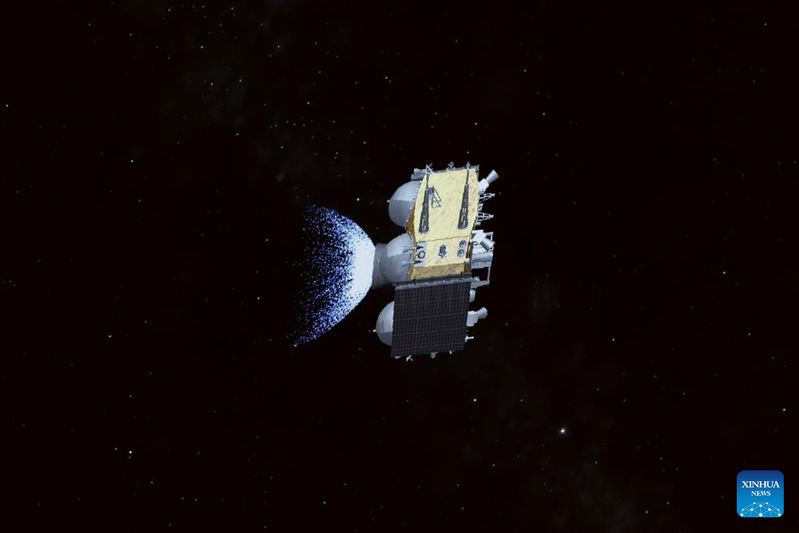来源:《China Daily》,2024年8月21日
作者:王震,上海社会科学院国际问题所副所长、研究员

This image taken from video animation at Beijing Aerospace Control Center on June 4, 2024 shows the ascender of China's Chang'e 6 probe, carrying samples collected from the moon's far side, lifting off from lunar surface. [Photo/Xinhua]
China's recent retrieval of the first-ever samples from the far side of the moon has renewed talks about the possibilities of the United States and China joining in space-based research programs aimed at addressing global challenges, particularly climate change.
The US and China each have very innovative space programs, and one area, for example, where the US and China could work together today would be space-based solar, Daniel Kammen, a professor of energy at the University of California, Berkeley, and founding director of the university's Renewable and Appropriate Energy Laboratory, told China Daily.
Space-based solar power, a concept involving the collection of solar energy in outer space via satellites and its distribution to Earth, has been gaining traction globally. As countries worldwide invest in research and development for the technology, international organizations are simultaneously pushing for net-zero carbon emissions by 2050.
The decreasing costs associated with launching materials into space have made the idea of deploying large solar panels — which beam power back to Earth using microwaves — increasingly feasible.
Kammen suggested that the US and China could challenge each other to collaborate on making space-based solar a reality.
'No nighttime'
He emphasized the continuous nature of this energy source: Space-based solar is on 24/7. There is no nighttime in space.
Both nations already have made significant strides in this field. In the US, Caltech's space solar power prototype, launched into orbit last year, has successfully demonstrated its ability to wirelessly transmit power in space and beam detectable power to Earth for the first time.
China, for its part, has achieved a milestone in its efforts to build a space solar power station in 2022. The China Academy of Space Technology has plans for a space high-voltage transfer and wireless power transmission experiment to be conducted in low Earth orbit by 2028, as outlined in its 2022 publication in the journal China Space Science and Technology.
Drawing inspiration from popular culture, Kammen referred to the movie The Martian, in which a stranded US astronaut is rescued through a joint effort between the US and China. He saw the fictional scenario as an example of how the two nations could work together in reality, combining their respective technological strengths to achieve common goals.
There's an opportunity to work peacefully together in space, to show that no matter who's going to be on the moon next, we have a chance to do clean energy in space as a bridge, said Kammen.
That's an exciting opportunity, he said, and stressed the urgency of doing so. We're going to need those breakthroughs because both the US and China are behind schedule to meet their climate goals.
The US has aimed to cut emissions in half by 2030, and the Chinese goal is to realize carbon neutrality before 2060.
The increase in extreme weather events in recent years highlights the urgency for the world to tackle climate change together, Wang Zhen, a research professor of international politics at the Institute of International Relations of the Shanghai Academy of Social Sciences, told China Daily.
China and the US, the two largest economies in the world, have great potential for cooperation, particularly in areas of climate change and clean energy, Wang said.
China is a pioneer in clean energy development in terms of solar power and electric vehicles, while the US holds strengths in software development and artificial intelligence, reflecting strong complementarity, he said.
Cooperation between the US and China will strengthen both countries and benefit the world, Wang said.